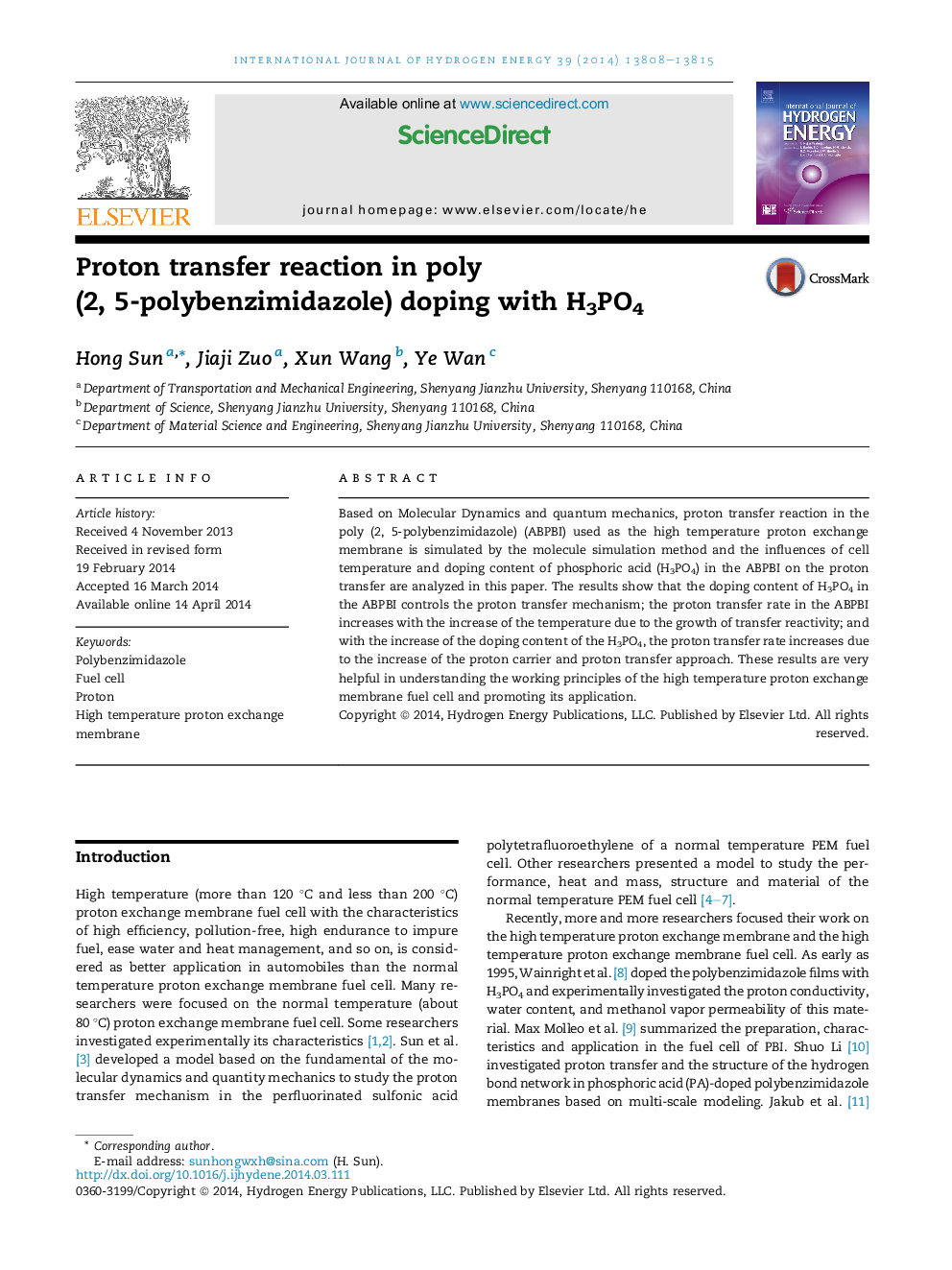| Article ID | Journal | Published Year | Pages | File Type |
|---|---|---|---|---|
| 1272687 | International Journal of Hydrogen Energy | 2014 | 8 Pages |
•Proton transfer reaction in the ABPBI is simulated by the molecule simulation.•The distances of the N–N and N–P increase with doping content and cell temperature.•The doping content of H3PO4 determines the proton transfer mechanism.•The diffusion coefficient of H3PO4 in the ABPBI increases with the doping content.•The diffusion coefficient of H3PO4 in the ABPBI increases with cell temperature.
Based on Molecular Dynamics and quantum mechanics, proton transfer reaction in the poly (2, 5-polybenzimidazole) (ABPBI) used as the high temperature proton exchange membrane is simulated by the molecule simulation method and the influences of cell temperature and doping content of phosphoric acid (H3PO4) in the ABPBI on the proton transfer are analyzed in this paper. The results show that the doping content of H3PO4 in the ABPBI controls the proton transfer mechanism; the proton transfer rate in the ABPBI increases with the increase of the temperature due to the growth of transfer reactivity; and with the increase of the doping content of the H3PO4, the proton transfer rate increases due to the increase of the proton carrier and proton transfer approach. These results are very helpful in understanding the working principles of the high temperature proton exchange membrane fuel cell and promoting its application.
